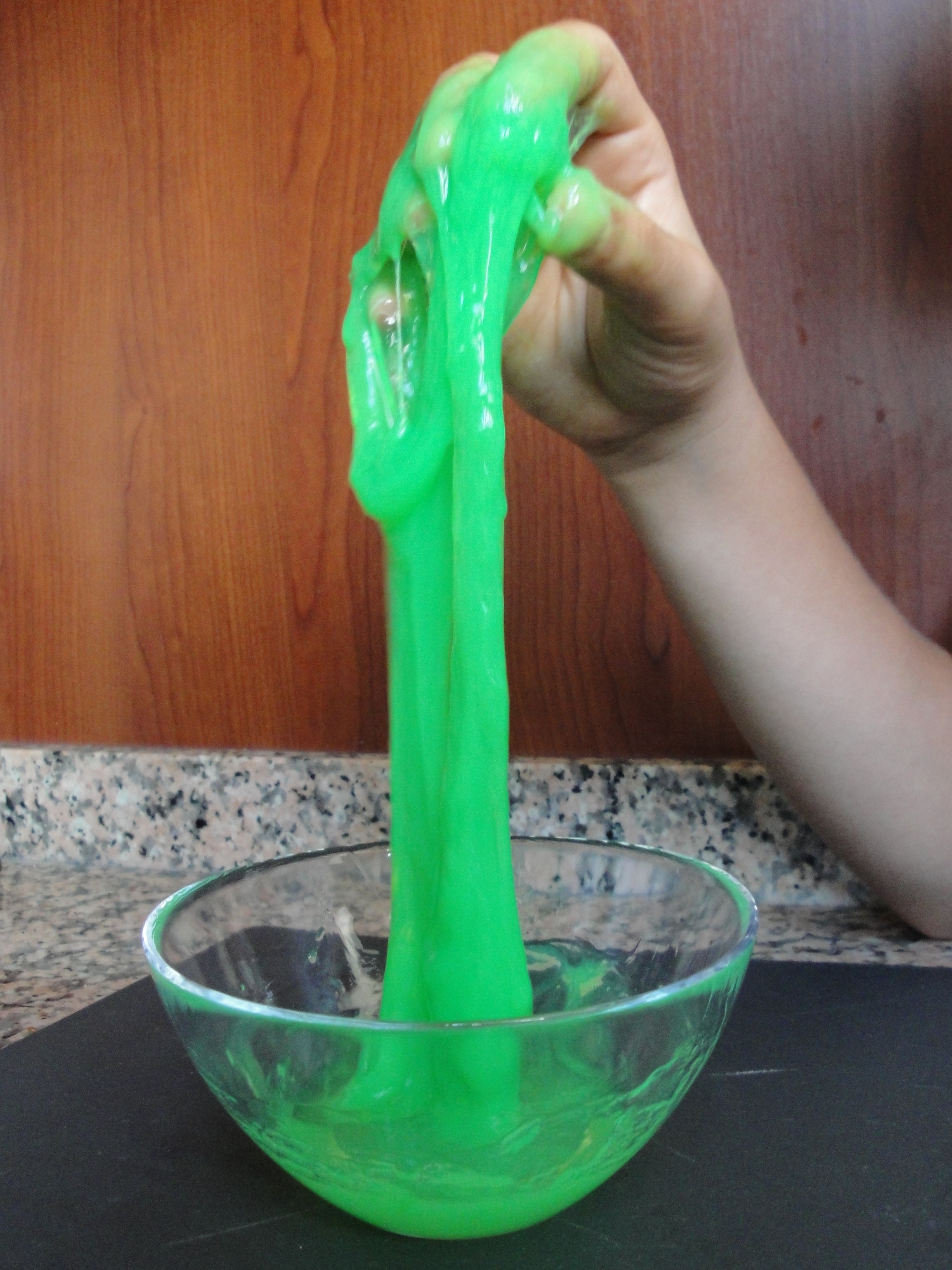Flubber (material) on:
[Wikipedia]
[Google]
[Amazon]
 Flubber (named from the film ''
Flubber (named from the film ''

 Flubber (named from the film ''
Flubber (named from the film ''The Absent-Minded Professor
''The Absent-Minded Professor'' is a 1961 American science fiction comedy film produced by Walt Disney Productions and based on the short story "A Situation of Gravity" by Samuel W. Taylor, originally published in the May 22, 1943 issue of ''L ...
''), Glorp, Glurch, or Slime is a rubbery polymer formed by cross-link
In chemistry and biology a cross-link is a bond or a short sequence of bonds that links one polymer chain to another. These links may take the form of covalent bonds or ionic bonds and the polymers can be either synthetic polymers or natural ...
ing of polyvinyl alcohol
Poly(vinyl alcohol) (PVOH, PVA, or PVAl) is a water-soluble synthetic polymer. It has the idealized formula H2CH(OH)sub>''n''. It is used in papermaking, textile warp sizing, as a thickener and emulsion stabilizer in polyvinyl acetate (PVAc) ...
(PVA) with a borate compound. Slime can be made by combining polyvinyl-acetate-based adhesives with borax
Borax is a salt (chemistry), salt (ionic compound), a hydration (chemistry), hydrated borate of sodium, with chemical formula often written . It is a colorless crystalline solid, that dissolves in water to make a base (chemistry), basic aqueo ...
.
Reaction
The gelation process entails formation of a borate ester that crosslinks the chains of the PVA. Borate esters form readily by condensation of hydroxyl groups and the B-OH groups. The individual polymer chains are bound together by weak hydrogen bonds. The resulting polymer network is composed of strands ofpolyvinyl alcohol
Poly(vinyl alcohol) (PVOH, PVA, or PVAl) is a water-soluble synthetic polymer. It has the idealized formula H2CH(OH)sub>''n''. It is used in papermaking, textile warp sizing, as a thickener and emulsion stabilizer in polyvinyl acetate (PVAc) ...
held together side-by-side by the borate molecules. It is evident that this cross linking is weak because of the ease with which the slime flows and pulls apart. However, even though this cross linking is weak, it does alter the properties of the resulting polymer.

Properties
Flubber is a non-Newtonian fluid that flows under low stress, but breaks under higher stresses and pressures. This combination of fluid-like and solid-like properties makes it a Maxwell fluid. Its behavior can also be described as beingviscoplastic
Viscoplasticity is a theory in continuum mechanics that describes the rate-dependent inelastic behavior of solids. Rate-dependence in this context means that the deformation of the material depends on the rate at which loads are applied. The ine ...
or gelatin
Gelatin or gelatine (from la, gelatus meaning "stiff" or "frozen") is a translucent, colorless, flavorless food ingredient, commonly derived from collagen taken from animal body parts. It is brittle when dry and rubbery when moist. It may also ...
ous.
See also
* Silly Putty * Gunge * Nickelodeon compounds *Slime (toy)
Slime was a toy product manufactured by Mattel, sold in a plastic trash can and introduced in February 1976. It consisted of a non-toxic viscous, squishy and oozy green or other color material made primarily from guar gum. Different variati ...
References
{{Reflist Chemistry experiments Non-Newtonian fluids Sensory toys